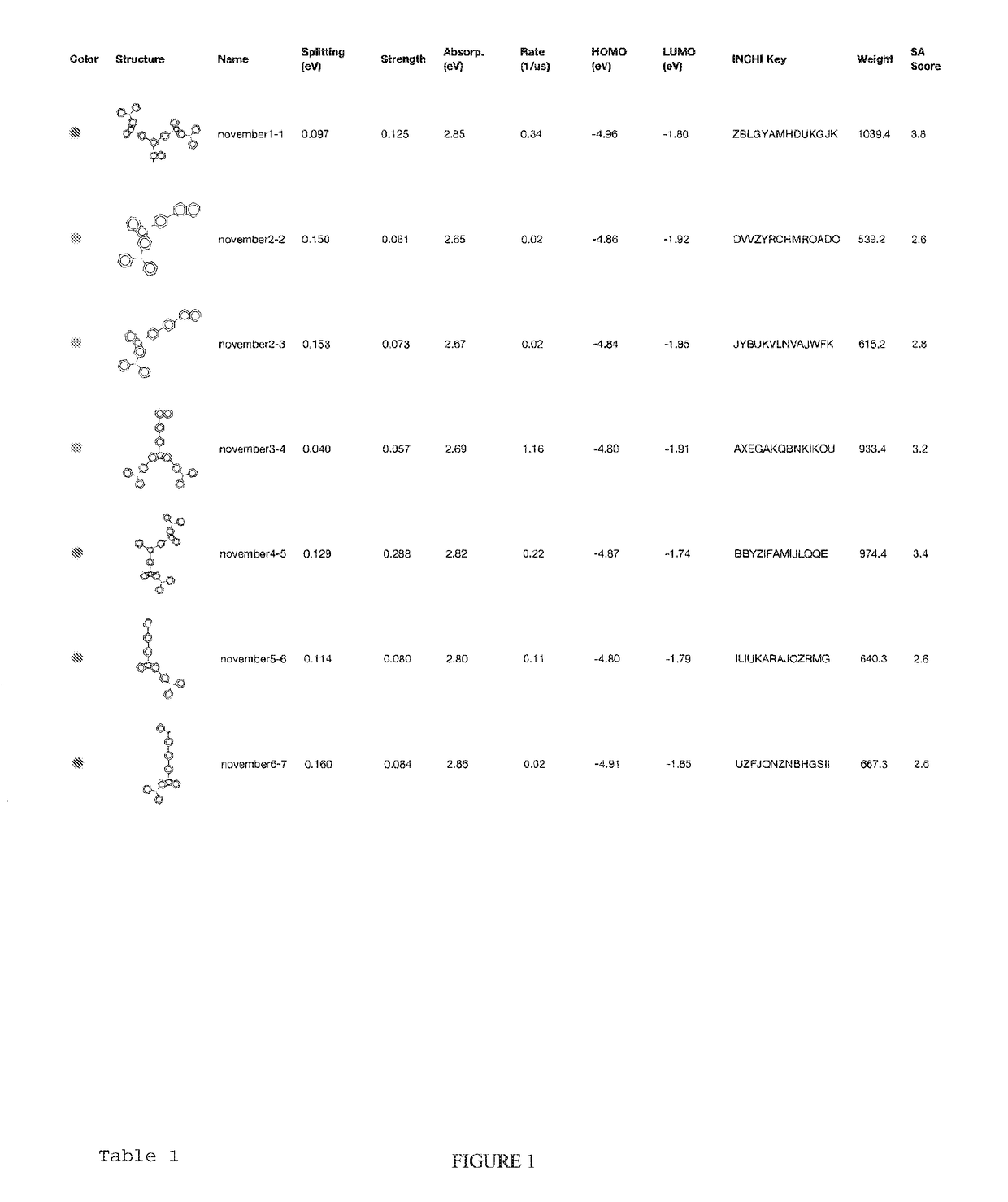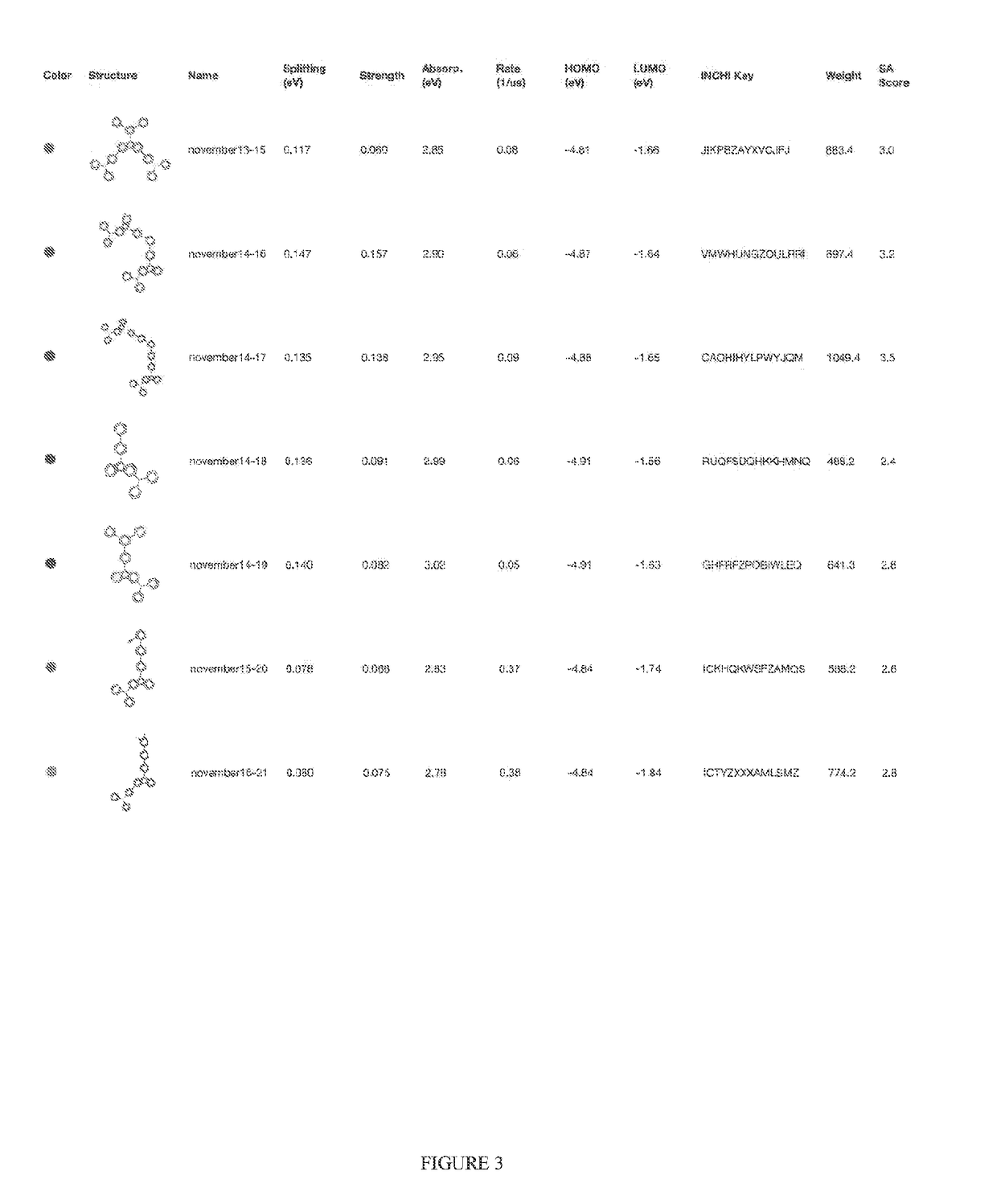Organic light-emitting diode materials
a light-emitting diode and organic technology, applied in the field of organic light-emitting diode materials, can solve the problems of limited lifetime of organic materials and reached limit to the performance of phosphorescent materials, and achieve the effects of delayed fluorescence, high excitation state, and rapid degradation
- Summary
- Abstract
- Description
- Claims
- Application Information
AI Technical Summary
Benefits of technology
Problems solved by technology
Method used
Image
Examples
Embodiment Construction
[0023]A description of example embodiments of the invention follows.
Glossary
[0024]The term “alkyl,” as used herein, refers to a saturated aliphatic branched or straight-chain monovalent hydrocarbon radical having the specified number of carbon atoms. Thus, “C1-C6 alkyl” means a radical having from 1-6 carbon atoms in a linear or branched arrangement. Examples of “C1-C6 alkyl” include, n-propyl, i-propyl, n-butyl, i-butyl, sec-butyl, t-butyl, n-pentyl, n-hexyl, 2-methylbutyl, 2-methylpentyl, 2-ethylbutyl, 3-methylpentyl, and 4-methylpentyl. An alkyl can be optionally substituted with halogen, —OH, C1-C6 alkyl, C1-C6 alkoxy, —NO2, —CN, and —N(R1)(R2) wherein R1 and R2 are each independently selected from —H and C1-C3 alkyl.
[0025]The term “alkenyl,” as used herein, refers to a straight-chain or branched alkyl group having one or more carbon-carbon double bonds. Thus, “C2-C6 alkenyl” means a radical having 2-6 carbon atoms in a linear or branched arrangement having one or more double bo...
PUM
| Property | Measurement | Unit |
|---|---|---|
| electric current | aaaaa | aaaaa |
| lifetime | aaaaa | aaaaa |
| energy | aaaaa | aaaaa |
Abstract
Description
Claims
Application Information
 Login to View More
Login to View More - R&D
- Intellectual Property
- Life Sciences
- Materials
- Tech Scout
- Unparalleled Data Quality
- Higher Quality Content
- 60% Fewer Hallucinations
Browse by: Latest US Patents, China's latest patents, Technical Efficacy Thesaurus, Application Domain, Technology Topic, Popular Technical Reports.
© 2025 PatSnap. All rights reserved.Legal|Privacy policy|Modern Slavery Act Transparency Statement|Sitemap|About US| Contact US: help@patsnap.com



